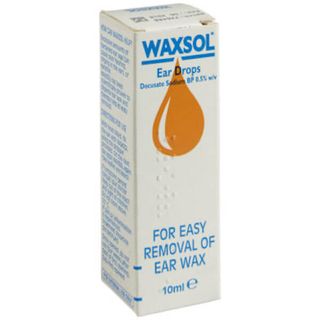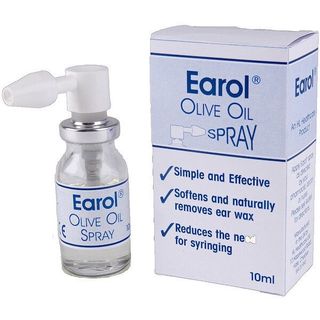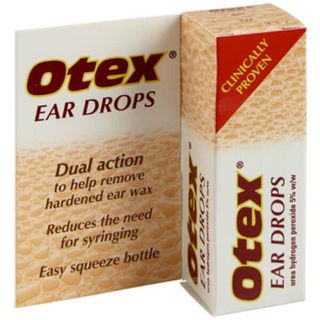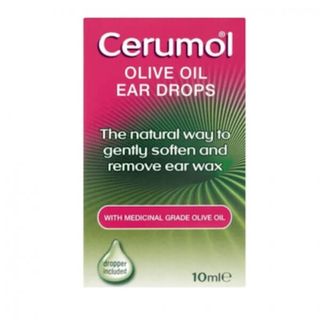
Ear Wax
Having wax in your ears is completely normal and is generally nothing to worry about. It’s there to stop irritants and dirt getting in and helps keep your ears nice and healthy. Most of the time, earwax falls out naturally over time. Occasionally however, it begins to build up, blocking the ears and causing a range of symptoms including reduced hearing, earache, ringing or buzzing and vertigo. If you think your earwax may be causing an issue, using drops will soften it so it can be removed naturally. Let’s find the best method to keep your ears clear and comfortable.
Ear Wax Treatments
 Waxsol Ear Drops£3.99
Waxsol Ear Drops£3.99
Earol Olive Oil Spray
Earol Olive Oil Spray£6.49
Otex Ear Drops
Otex Ear Drops£5.49
Cerumol Olive Oil Ear Wax Drops
Cerumol Olive Oil Ear Wax Drops£3.15
View recommended products for Ear Wax
Don't wait to get the medical help you need.
View our recommended treatments and select your preferred treatment and quantity from a list of options for you.
- Selected by our UK-based medical team
- Quick and easy checkout
- Treatments dispatched same day (before 3pm)
Ordering as easy as 1, 2, 3
1. Find the ideal treatment
2. Get a free consultation
3. Enjoy speedy delivery
Advice for Ear Wax
What is Excessive Ear Wax & what causes it?
Earwax is a substance produced inside your ears. Its function is to keep the ears clean and free from germs.
Earwax usually passes out of the ears naturally, but sometimes too much can accumulate, blocking the ears. This build-up of earwax is a common problem that in most cases can be easily treated using drops bought from a pharmacy.
Some people are more prone to excess earwax than others. This is due to their body naturally producing too much earwax. Other factors that contribute to an earwax build-up include:
- Having narrow ear canals (the tube that connects the opening of the ear with the ear drum)
- Having excessively hairy ears
- Naturally producing hard or dry earwax
- Being elderly – as we age, our earwax can become harder and drier
- Having bony growths in the outer regions of the ear canal
- Using cotton buds or ear plugs – frequently inserting objects into the ear can cause a build-up
What are the symptoms of Excessive Ear Wax?
Having an excess earwax build-up in your ear can cause the following symptoms:
- Loss of hearing
- Tinnitus (ringing in the ears)
- Earache
- An itchiness in or around the ear(s)
- Vertigo (a dizzy, spinning sensation)
- Ear infections
These symptoms will usually improve after the excess earwax has been removed.
How is Excessive Ear Wax diagnosed?
It is recommended to contact your GP should any of the associated symptoms prove particularly troublesome. Also, see your doctor if over-the-counter remedies haven’t been effective after three to five days of use.
Your doctor or practice nurse will usually look inside the ear(s) to check whether they are blocked. They may also perform some simple hearing tests to ascertain the extent of the blockage. Depending on the result, they may suggest perseverance with ear drops, or alternatively, they may perform a minor procedure known as ear irrigation, which uses water to flush out the ear canal.
If these treatments prove unsuccessful, your doctor or practice nurse may refer you to the ENT (Ear, Nose & Throat) department of your nearest hospital. Here they can offer more specialised treatments, such as an aural toilet or microsuction.
How do I treat Excessive Ear Wax?
There are several treatments available to help treat excessive earwax. The most widely available are listed below:
- Eardrops – these treatments are applied several times daily, usually for 3-5 days. They are designed to help soften the earwax, allowing it to pass out of the ear naturally. Examples of earwax softening drops include; Otex ear drops, Earex ear drops and Olive Oil ear drops.
- Ear irrigation – this method is quick and painless and involves gently pumping water into the ear canal, which washes the earwax out. This procedure is typically performed by a GP or practice nurse using an electric pump. You can also buy ear irrigation solutions over-the-counter for use at home. An example of an over-the-counter ear irrigation solution is Audiclean.
- Aural toilet – involves using a thin instrument with a hooped end that is designed to scrape out the ear wax. This procedure is usually performed in a hospital.
- Microsuction – a quick and painless procedure that uses a small device to suck the earwax from the ear canal. This method, like the aural toilet, is usually performed in a hospital.
Some people naturally produce more earwax than others, which makes them more prone to the condition. In these cases, more frequent treatment may be required. To discover which treatment is suitable for you, ask your pharmacist or doctor for advice.
How can I prevent Excessive Ear Wax?
It isn’t clear whether there is anything that can be done to prevent a build-up of earwax, although some doctors may recommend using ear drops regularly, which will keep the earwax soft, allowing it to pass from the ear more freely.
It is important not to attempt and scrape out the earwax using a finger or cotton bud. This may only serve to compact the wax, pushing it further into the ear canal. This will likely make the problem worse.